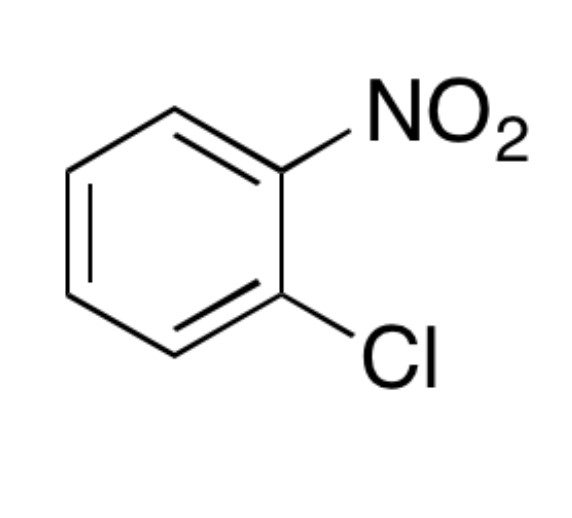Why You Need to Know About 1-Chloro-2-nitrobenzene?
Why You Need to Know About 1-Chloro-2-nitrobenzene?
Blog Article
Understanding the Applications and Market Trends of 1-Chloro-2-Nitrobenzene

1-Chloro-2-nitrobenzene is a crucial chemical compound commonly used in various industrial applications. It is an aromatic compound with considerable importance in the production of dyes, drugs, and agrochemicals. The compound's molecular framework adds to its versatility, making it a valuable intermediate in organic synthesis. As industries evolve, the demand for high-quality chemical intermediates like 1-Chloro-2-nitrobenzene continues to grow, driven by advancements in technology and industrial processes.
The chemical properties of 1-Chloro-2-nitrobenzene make it ideal for a range of applications. It is known for its security, solubility in organic solvents, and reactivity, which allow it to operate effectively as a precursor in the synthesis of intricate organic particles. Among the primary uses of this compound is in the dye industry, where it acts as a key resources in the production of azo dyes and pigments. These dyes are extensively used in fabrics, plastics, and printing inks, adding to the vivid shades and resilience required by these industries.
In the pharmaceutical sector, 1-Chloro-2-nitrobenzene plays an essential role in the development of various drugs. It is used as an intermediate in the synthesis of pharmaceutical compounds that have antibacterial, antifungal, and anti-inflammatory properties. Researchers continue to explore new derivatives of this compound to establish more efficient and safer medications that can address a variety of health conditions.
The agrochemical industry additionally benefits from the properties of 1-Chloro-2-nitrobenzene. It is used in the solution of chemicals, herbicides, and fungicides, contributing to boosted crop defense and return enhancement. The compound's ability to act as an intermediate in the synthesis of energetic components makes it an important asset in the development of sustainable farming options.
As global industries shift towards environmentally friendly practices, the chemical manufacturing sector is exploring ways to produce 1-Chloro-2-nitrobenzene with minimal environmental impact. Advances in environment-friendly chemistry methods, such as catalytic processes and solvent-free reactions, are being implemented to minimize waste generation and power consumption. These efforts aim to ensure the sustainable production of chemical intermediates without compromising quality and effectiveness.
Market fads indicate a steady demand for 1-Chloro-2-nitrobenzene, driven by the expanding applications across various sectors. The growing demand for high-performance dyes, pharmaceutical innovations, and sustainable agricultural products adds to the market's positive outlook. Manufacturers are concentrating on enhancing production capacities, improving product quality, and abiding by rigorous regulatory standards to meet the evolving demands of global consumers.
Quality assurance plays a vital role in the production of 1-Chloro-2-nitrobenzene. Stringent adherence to industry standards and specifications ensures that the end product meets the required purity levels and efficiency standards. Analytical strategies such as gas chromatography and high-performance liquid chromatography are utilized to monitor the quality and 1-Chloro-2-nitrobenzene uniformity of the compound, ensuring it aligns with the desired application needs.
The competitive landscape for 1-Chloro-2-nitrobenzene includes principals in the chemical manufacturing industry that are investing in r & d to present innovative products and processes. Partnerships in between chemical suppliers and end-users aim to create tailored remedies that address certain industry obstacles and enhance overall efficiency.
In spite of its widespread use, managing and storage space of 1-Chloro-2-nitrobenzene call for adherence to safety protocols. The compound's potential hazards demand proper protective measures, including making use of personal protective devices, adequate ventilation, and safe disposal practices. Regulatory authorities supply standards to ensure the safe handling, transport, and disposal of the compound to stop environmental and health threats.
Looking in advance, the future of 1-Chloro-2-nitrobenzene is encouraging, with continuous advancements in chemical synthesis and application development. Innovations in sustainable production techniques and the emergence of novel applications are anticipated to drive additional development in the market. The ongoing cooperation in between industry stakeholders, regulatory bodies, and research institutions will certainly play a crucial role fit the future landscape of this flexible chemical compound.
To conclude, 1-Chloro-2-nitrobenzene remains a vital component in various industrial applications, from dyes and pharmaceuticals to agrochemicals. Its unique properties and versatility add to its continued demand across different sectors. With a focus on sustainability, quality, and innovation, the industry is well-positioned to meet the evolving needs of the marketplace while ensuring environmental and regulatory conformity. As research and technological advancements progress, 1-Chloro-2-nitrobenzene is readied to play an even more substantial role in the chemical industry. Report this page